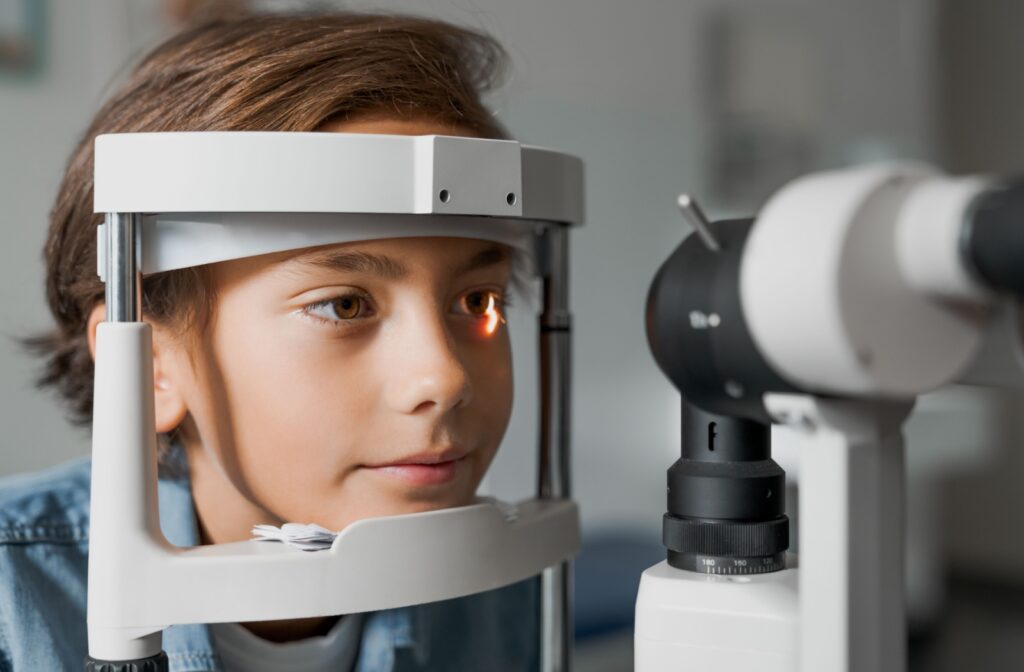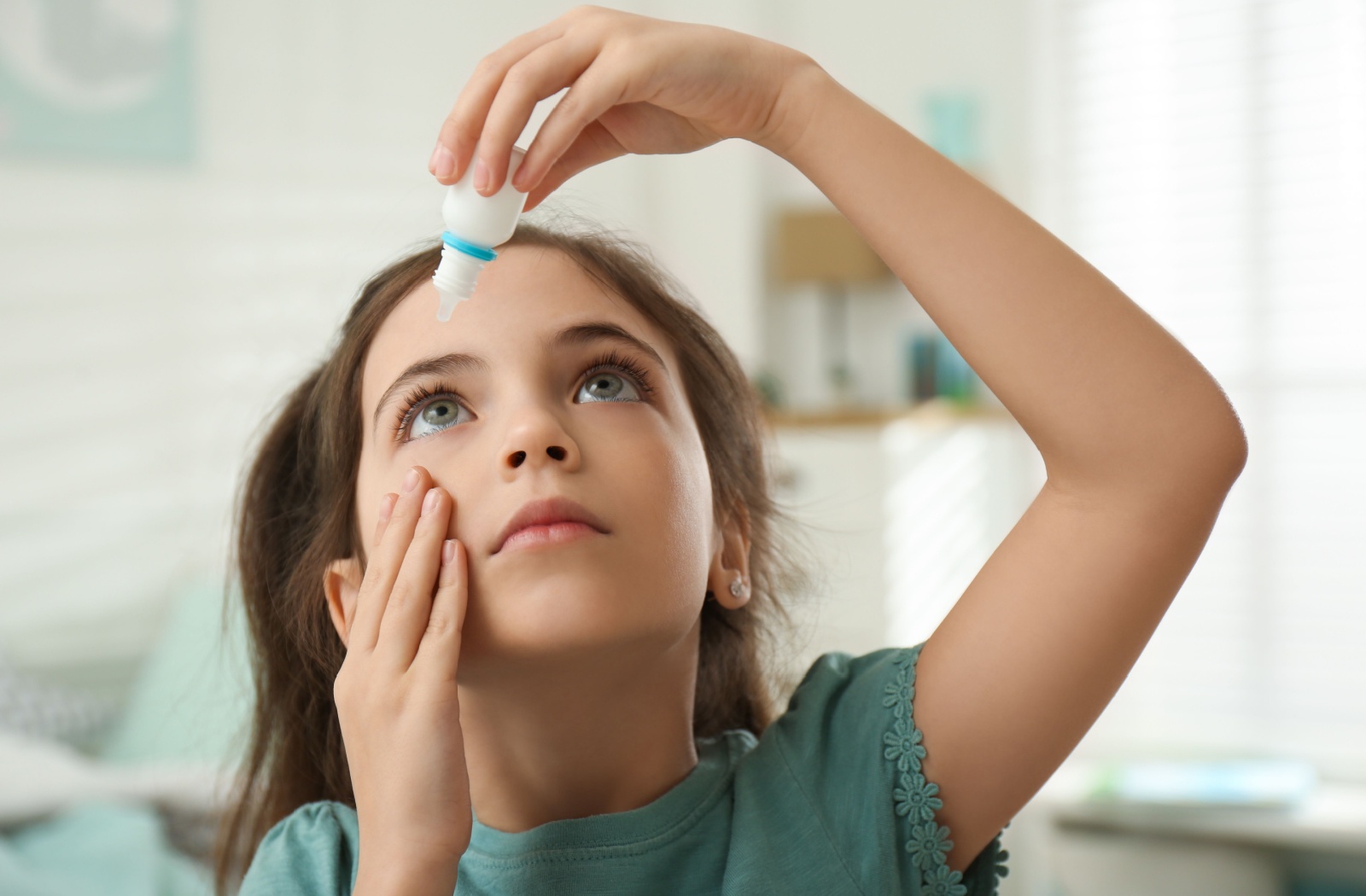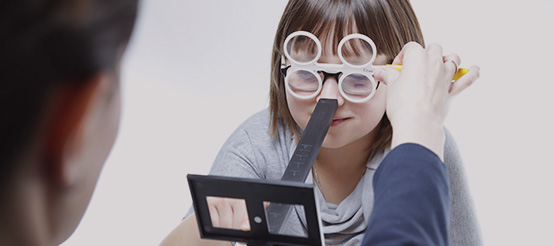Our children’s health is every parent’s priority, and when it comes to something as delicate as their eyes, we should leave nothing to chance. Even something seemingly as simple as an eye drop choice should get some consideration. Eye drops that are safe for kids include:
- Lubricating eye drops
- Antihistamine eye drops
- Antibacterial eye drops
- Atropine eye drops
Even though these eye drops are typically safe for children, there may be some variations or versions that aren’t suitable. So, following your optometrist’s and the manufacturer’s instructions is essential to safeguard your child’s safety. It’s always best to check with your optometrist before giving your child eye drops if you’re ever unsure of their safety for children.
Understanding Children’s Eye Health
While children can experience a range of eye problems, there are 4 that stand out as common reasons to use eye drops. Conjunctivitis (commonly known as pink eye), styes, blocked tear ducts, and foreign bodies in the eye. These issues often cause discomfort, can arise from infection, inflammation, or blockage, and require proper care.
Why does using kid-friendly eye drops matter? Kids can be more sensitive to harsh chemicals and preservatives. Due to greater sensitivity, their eyes may react differently or even more severely than adults. Opting for gentle, pediatrician-recommended eye drops is a safer choice that helps alleviate the issue without introducing unnecessary risks.
Types of Eye Drops for Children
The best eye drops for children should be free from preservatives like benzalkonium chloride because of the potential negative effects it can have. This is especially true if the child uses the drops long-term, multiple times daily.
Lubricating Drops
Lubricating eye drops can provide relief from dry, irritated eyes. They add moisture to the eye and can be a lifesaver for children suffering from dry air, allergies, or digital eye strain. Many manufacturers make preservative-free versions for long-term use.
Antihistamine Drops
Antihistamine drops help minimize allergy symptoms that can affect the eyes. Antihistamine eye drops reduce the release of histamine, which is the body’s response to allergens, which helps alleviate itchiness and redness. Before using an allergy eye drop, carefully read the package to make sure it’s safe for your child’s eyes or check with their eye doctor.
Antibacterial Drops
Antibacterial drops can treat red eyes with a bacterial origin because they can clear the infection. An eye doctor or other healthcare professional will typically prescribe or recommend antibacterial eye drops. Make sure these are used as directed to avoid any potential complications.
Atropine Eye Drops
Atropine eye drops aren’t something you’ll typically pick up on the pharmacy shelf. They are most commonly used in the eye doctor’s office to dilate pupils before an eye examination. Atropine eye drops are also commonly used as a form of myopia control.
Safely Administering Eye Drops to Kids
Administering eye drops to a child can be daunting, but it becomes more manageable with the right approach.
Positioning
Your child should lie on their back or sit in a high chair, depending on which position allows you to get closest to their eye without causing them stress.
Technique
Gently pull down the lower lid to create a small pocket for the drop, then instruct your child to look up before dispensing the fluid into the pocket. This technique helps with accuracy and minimizes the need to hold their eye open.
Distraction
If possible, have another adult distract your child with a toy, video, or story while you administer the drops. This helps the process go more smoothly and also discourages your child from blinking or moving too much.
Safety Precautions
Eye drops, like any medicine, need to be stored properly. They should be kept in a cool, dark place away from young, explorative hands. Remember to check the expiration date, as using eyedrops past their prime may introduce contamination or be less potent, which is ineffective or can potentially cause adverse reactions.
If there isn’t any improvement in the condition after a day or 2 of use, or if there are signs of an allergic reaction such as swelling, rash, or trouble breathing, it’s essential to consult a healthcare professional immediately.

Empowering Parents with Knowledge
The responsibility of keeping our children safe and healthy is a significant one. Empowerment through knowledge is the key. Parents can face eye issues confidently by understanding the principles behind safe eye care and being informed about suitable eye drops.
Don’t hesitate to contact our team at Urban Optique if you have any questions about which eye drops you should use for your child. We’re also happy to book an appointment with one of our optometrists if your child has persistent symptoms. We can examine their eyes to make sure there’s nothing more serious going on below the surface.
















